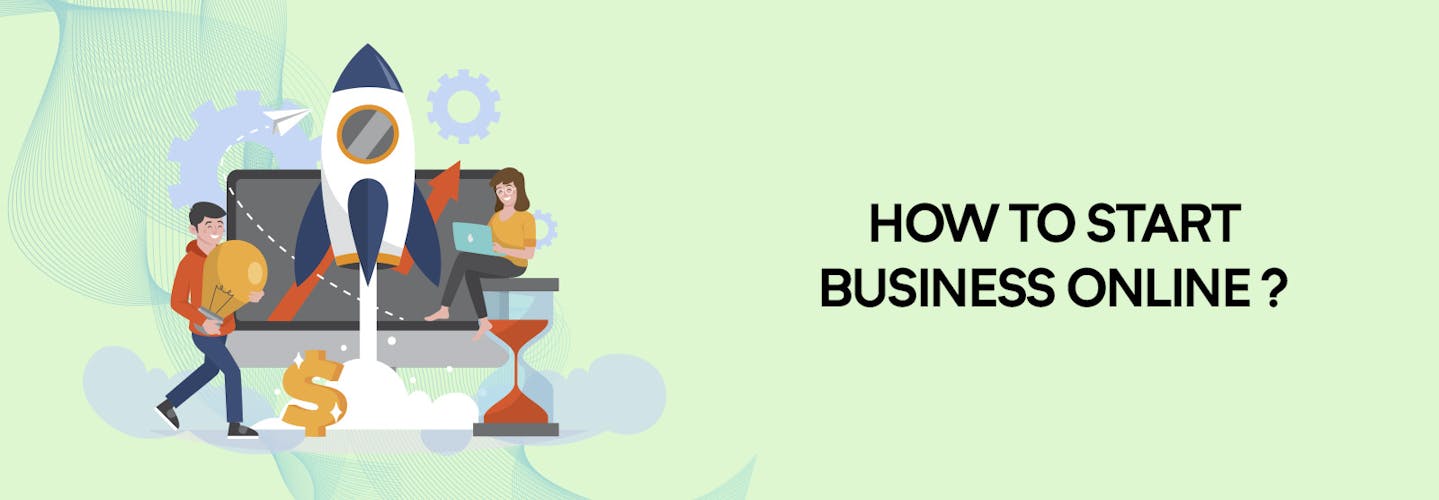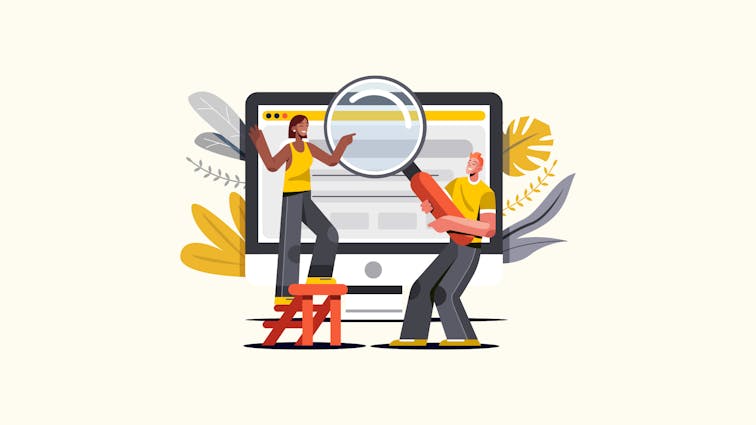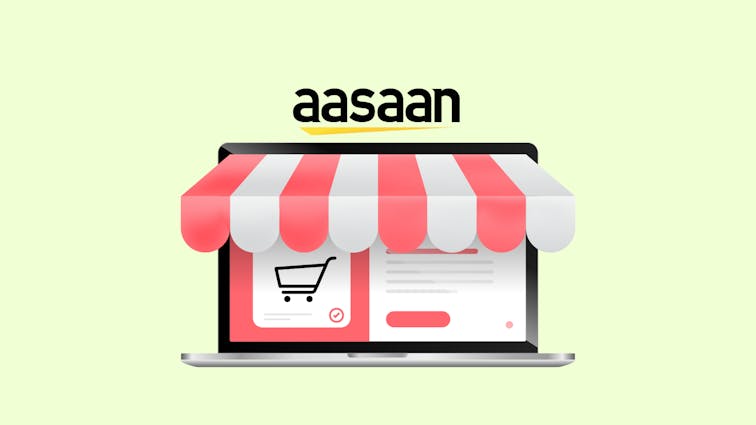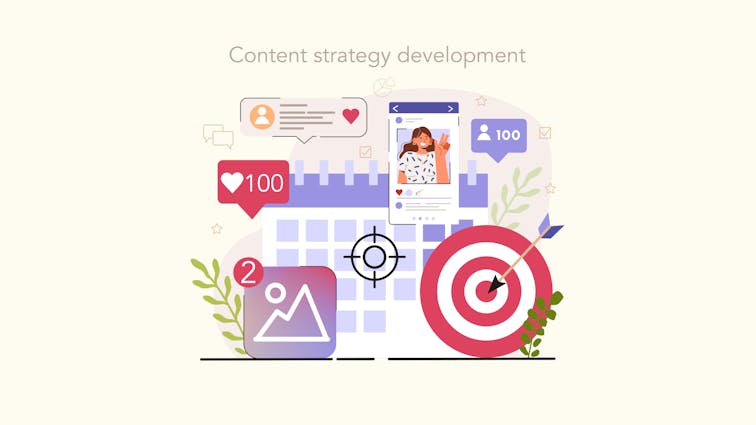
How to Start a Business Online from scratch: 8 Steps to Launch [2025]
In today’s interconnected world, the digital landscape has opened up endless possibilities for aspiring entrepreneurs to bring their business dreams to life.
With the right strategies, tools, and determination, anyone can embark on an exciting journey of starting a business online from scratch.
This blog aims to guide and inspire individuals who are eager to tap into the vast potential of the online realm and build a successful venture.
Statistics:
- The global e-commerce market is expected to reach US$6.07 trillion in 2025, growing at a CAGR of 11.34%, for the period 2020-2025.
- Entrepreneurial success stories abound in the digital sphere. Amazon, the world’s largest online marketplace, started as a modest online bookstore in 1994 and has since grown into a global e-commerce giant, generating billions in revenue annually.
- The low cost of entry and the flexibility of online business models make them appealing to entrepreneurs. According to a report by Forbes, small business owners are optimistic about their growth prospects in 2023, with 73% predicting their businesses will grow
Join us on this blog journey as we delve into the essential steps, insights, and best practices for launching your own online business from scratch.
Whether you have a groundbreaking idea or are seeking inspiration, we’ll equip you with the knowledge and tools needed to thrive in the digital marketplace.
Let’s unlock your entrepreneurial potential together!
What is Online Business?

Before diving into the details, let’s first understand what online business entails. An online business refers to any venture conducted primarily over the internet.
It involves selling products or services, providing valuable information, or offering solutions to customers through online platforms.
Why Start an Online Business?
The advantages of starting an online business are numerous. Firstly, the internet provides a vast reach, allowing you to connect with a global audience.
Online businesses also have lower startup costs compared to traditional brick-and-mortar establishments.
Additionally, the flexibility and convenience of running an online business offer greater work-life balance and the potential for passive income streams.
Benefits of Starting an Online Business
- Low Overhead Costs: Online businesses require minimal overhead costs compared to physical stores. You can avoid expenses such as rent, utilities, and inventory storage.
- Global Reach: The internet allows you to reach customers worldwide, expanding your potential customer base exponentially.
- Flexibility: With an online business, you have the freedom to work from anywhere and set your own schedule.
- Scalability: Online businesses can scale rapidly as they are not limited by physical constraints. You can easily accommodate growing demand without significant infrastructure investments.
- 24/7 Availability: Your online business can operate around the clock, providing customers with access to your products or services at any time.
Related: Benefits & Limitations of Doing online business
STEP 1: Identify Your Niche

Before you begin, it’s crucial to determine the right niche for your online business. Consider the following as you make your decision:
- Your experience, expertise, and areas of interest
- Market demand for products or services in that sector
- The competition size and growth rate
- Choose a Profitable Niche
Once you have established your niche, you’ll have a clear vision of where your business fits within the online marketplace.
STEP 2: Choose a Business Model

Next, determine the best format for your online business. There are several models to choose from, including:
- Selling products or services straight to consumers
- Creating a marketplace platform for other businesses to sell
- Offering membership annuities for exclusive content or services
- Promoting affiliate products and earning a commission
Choose the model that fits best with your long-term goals and work style.
Related: 5 Types of Ecommerce Business Models That Works
STEP 3: Create Your Business Plan

1. Conduct Market Research
Market research will help you assess potential risks, understand customer needs, and shape your marketing strategies.
Evaluate your competition in the market and identify their strengths and weaknesses. This will both help you stand out from the crowd.
2. Plan Your Marketing Strategy
Your marketing strategy should encompass the ways you’ll reach and connect with your target audience. Consider leveraging:
- Email marketing
- Content marketing
- Social media marketing
- Influencer partnerships
- Paid online ads
Determine which of these approaches is best suited for your audience and overall business goals.
3. Financial Projections
Ensure your business model can remain profitable by estimating:
- Initial cost
- Revenue flow
- Expenses and break-even points
- Financial forecast based on market trends
Estimating these numbers in advance helps ensure that you understand the budgetary requirements for your launch.
STEP 4: Create Your Online Presence
Now that you have a plan in place, establish an appealing presence on the internet. This includes:
- Setting up a platform on relevant social media channels
- Purchasing your domain name
- Designing an attractive website
- Creating engaging website content
Your website should accurately reflect your brand personality and show credibility as customers view or interact with your content.
How to create Your E-commerce Site with an aasaan app

Here are the steps to setting up your online store with the Aasaan app:
- Download the app for free from the link below (available on both Android and iOS)
- Sign up to Aasaan.
- Add categories and products to your store.
- Add your payment, delivery and checkout settings.
In these 4 simple steps, your online store is ready to sell!
aasaan is a do-it-yourself platform for businesses who wish to take their business on the internet. It is effortless and cost-effective to start an online business and grow their business using aasaan app. Want to learn how to Create Free Online Store? It is just an App Download away!
STEP 5: Developing a Content Strategy

1. Importance of High-Quality Content
High-quality content is the backbone of any successful online business. It helps you establish credibility, engage your target audience, and drive traffic to your website.
Develop a content strategy that focuses on providing valuable and relevant content to your audience.
Ensure that your content aligns with your brand voice, addresses your audience’s pain points, and provides solutions or valuable insights.
2. Identifying Content Formats
Diversify your content formats to cater to different preferences and engage your audience effectively.
Consider creating blog articles, videos, podcasts, infographics, case studies, or interactive content.
Experiment with different formats and analyze their performance to understand what resonates best with your audience.
Use a mix of educational, entertaining, and promotional content to create a well-rounded content strategy.
3. Conducting Keyword Research
Keyword research is crucial for optimizing your content for search engines and increasing organic traffic to your website.
Use keyword research tools to identify relevant keywords and phrases that your target audience is searching for.
Incorporate these keywords naturally into your content, including headings, subheadings, and body text.
Focus on long-tail keywords that have a moderate search volume and lower competition for better chances of ranking higher in search engine results.
4. Creating an Editorial Calendar
An editorial calendar helps you plan and organize your content creation process effectively.
Create a calendar that outlines the topics, formats, and publishing schedule for your content. This ensures consistency in delivering fresh and engaging content to your audience and helps you stay organized.
Consider factors such as seasonality, industry trends, and customer interests when planning your content calendar.
This allows you to align your content with relevant topics and timely events, maximizing its impact and relevance.
5. Engaging with Your Audience
Engagement is key to building a loyal and active community around your online business. Actively interact with your audience through comments, messages, and social media conversations.
Respond promptly and thoughtfully, addressing their questions, concerns, and feedback. Encourage user-generated content and incorporate it into your content strategy.
Engaging with your audience builds trust, fosters loyalty, and encourages them to become advocates for your brand.
Related: The Ultimate Guide to Launching Your Online Business from Home.
STEP 6: Driving Traffic to Your Website

1. Search Engine Optimization (SEO)
Optimizing your website for search engines is crucial for driving organic traffic.
Conduct keyword research to identify relevant keywords and incorporate them naturally into your website’s content, meta tags, headings, and URLs. Focus on creating high-quality and valuable content that aligns with search intent.
Improve your website’s loading speed, mobile responsiveness, and user experience to enhance its search engine visibility.
2. Pay-Per-Click (PPC) Advertising
PPC advertising allows you to reach your target audience effectively by displaying targeted ads on search engines and other platforms.
Develop a comprehensive keyword strategy, create compelling ad copy, and optimize your landing pages for conversions.
Set a budget, monitor your campaigns closely, and refine your targeting and messaging to maximize the return on your ad spend.
3. Social Media Marketing
Leverage social media platforms to promote your online business and drive traffic to your website.
Develop a social media strategy that aligns with your target audience’s preferences and behaviors.
Create engaging content tailored to each platform, such as eye-catching visuals, informative videos, or interactive polls.
Engage with your followers, participate in relevant conversations, and utilize hashtags to expand your reach and visibility.
4. Content Marketing
Content marketing is a powerful strategy for attracting and retaining your target audience. Create high-quality and valuable content that addresses your audience’s pain points, provides solutions, or offers useful insights.
Distribute your content through various channels, such as your blog, social media, guest posting, or email newsletters.
Incorporate SEO best practices to improve your content’s visibility in search engine results.
5. Influencer Partnerships
Collaborating with influencers in your industry can help you reach a wider audience and drive traffic to your website.
Identify influencers whose values and audience align with your brand. Establish partnerships through sponsored content, guest blogging, or social media collaborations.
The endorsement and reach of influencers can significantly enhance brand awareness and attract targeted traffic to your online business.
STEP 7: Monetizing Your Online Business

1. Understanding Monetization Options
There are various ways to monetize your online business.
Explore different revenue streams and choose the ones that align with your business model and target audience. Common monetization options include:
- E-commerce: Selling physical products directly to customers through your website or online marketplace platforms.
- Digital Products: Creating and selling digital products such as e-books, online courses, templates, or software.
- Affiliate Marketing: Promoting other companies’ products or services and earning a commission for each sale or referral.
- Advertising: Displaying relevant advertisements on your website or blog and earning revenue through ad impressions or clicks.
- Subscription-based Services: Offering premium content, exclusive access, or personalized services through subscription plans.
2. Implementing Affiliate Marketing
Affiliate marketing is a popular monetization method that allows you to earn commissions by promoting other companies’ products or services.
Research and join affiliate programs that align with your niche and target audience.
Create content that incorporates affiliate links naturally and provides value to your audience. Track your affiliate performance and optimize your strategies to maximize your earnings.
3. Selling Digital Products or Services
Creating and selling digital products or services is a lucrative way to monetize your online business.
Develop high-quality digital products such as e-books, online courses, software, or templates that cater to your target audience’s needs.
Set up a secure and user-friendly platform for selling and delivering your digital products. Implement effective marketing strategies to promote your offerings and drive sales.
4. Advertising and Sponsorships
Displaying relevant advertisements on your website or blog can generate revenue through ad networks or direct sponsorships.
Sign up for reputable ad networks like Google AdSense or explore direct advertising partnerships with companies in your niche.
Optimize your website’s ad placements and monitor the performance of your ads to maximize your ad revenue.
5. Offering Premium or Subscription-based Content
If you have valuable expertise or exclusive content, consider offering premium or subscription-based services.
Develop premium content, such as in-depth guides, video courses, or access to a members-only community, and offer it at a premium price.
Alternatively, create a subscription model that provides ongoing value to subscribers, such as monthly newsletters, exclusive discounts, or early access to new products.
6. Providing Consulting or Freelance Services
If you have specialized knowledge or skills, consider offering consulting or freelance services related to your niche.
Position yourself as an expert in your field and provide personalized services to clients. Offer one-on-one consultations, project-based work, or ongoing retainer services.
Market your services through your website, social media, and professional networks to attract clients.
STEP 8: Analyzing and Improving Performance

1. Tracking Key Performance Indicators (KPIs)
Monitoring and analyzing key performance indicators (KPIs) is essential for assessing the success of your online business.
Track metrics such as website traffic, conversion rates, customer acquisition cost (CAC), customer lifetime value (CLTV), and revenue.
Use analytics tools and reports to gain insights into user behavior, customer demographics, and sales trends.
Regularly review and analyze these metrics to identify areas for improvement and make data-driven decisions.
2. Conducting A/B Testing
A/B testing involves comparing two versions of a webpage, marketing campaign, or element to determine which performs better.
Experiment with different layouts, headlines, calls-to-action, or pricing strategies to optimize your conversions.
Use A/B testing tools and analyze the results to understand user preferences and refine your strategies.
3. Gathering Customer Feedback
Listening to your customers is crucial for improving your online business. Gather feedback through surveys, reviews, or customer support interactions.
Pay attention to both positive and negative feedback and use it to enhance your products, services, and user experience.
Engage with your customers through social media, email, or live chat to build relationships and demonstrate your commitment to their satisfaction.
4. Continuous Learning and Adaptation
The online business landscape is ever-evolving, so it’s essential to stay updated and adapt to changes.
Invest in continuous learning by attending industry events, webinars, or workshops. Keep an eye on emerging trends, technologies, and consumer behaviors.
Be open to experimentation and adaptation, and be willing to pivot your strategies as needed to stay ahead of the competition and meet your customers’ evolving needs.
Conclusion:
While starting a business online from scratch may have its challenges, it also offers tremendous flexibility, scalability, and global reach.
By following the steps outlined in this guide and maintaining a determined and resilient mindset, you can overcome obstacles and achieve your entrepreneurial goals.
Remember, success rarely happens overnight, and perseverance is key.
Embrace the journey, learn from your experiences, and never stop striving for improvement.
With dedication, passion, and a strong foundation, you have the potential to create a thriving online business from scratch.
Good luck on your entrepreneurial endeavors!
FAQ’s:
1. Can I start an online business even if I’m just a kid?
Absolutely! Age doesn’t limit your entrepreneurial spirit. Just make sure to have a grown-up’s support and guidance.
2. How much money do I need to start an online business?
You can start with a small budget or even no money at all. It all depends on the type of business you want to start.
3. Is it hard to make money with an online business?
It can take time and effort to build a successful online business, but with passion and dedication, you can achieve it.
4. Do I need to learn coding to create a website for my online business?
Not necessarily. There are user-friendly tools and platforms available that don’t require coding knowledge.
5. What if my online business idea fails?
Failure is a part of the journey. Learn from it, make improvements, and try again. Each failure brings you closer to success.








